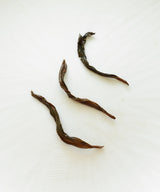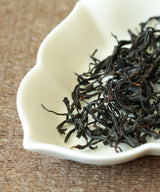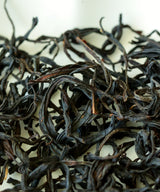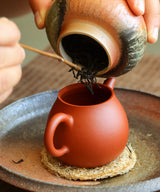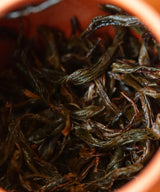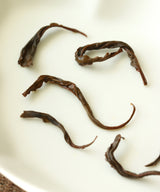Wild Keemun Red
牯牛降 野生祁门红茶
Harvest
April 2021
Origin
Qimen, Anhui
To most people, Keemun black tea is elusive and mysterious. It’s a tea that is so famous that everyone’s heard of it, but few have seen or tried.
Keemun black tea comes exclusively from Qimen County 祁门县 in Anhui Province. Qimen, uniquely situated in the vicinity of the famous Yellow Mountain 黄山 and the Yangtze River, is a mountainous region 2000 ft above sea level. They have been crafting tea here since the ancient times.
Keemun Black’s colorful heritage goes back to 1875. It was once the most beloved tea for the British Royal Family. Keemun is famous for having a very unique aroma and taste, referred to as the “Qimen Fragrance”—a combination of floral, honey and orchid fragrances with a sweet and malty taste. Keemun was the original tea of inspiration for Earl Grey tea, named after the British Prime Minister Earl Grey II in the 19th century. It is said that Grey was given a high quality Keemun tea and when it was depleted, he tried to replicate it with the addition of bergamot oil. At the time, it was not uncommon for cheaper teas in England to be flavored with bergamot in an attempt to imitate the more expensive Buddha’s Hand and Keemun teas.
The geographical origin and the traditional craftsmanship is what makes Keemun extremely unique and special.
The core producing region of Keemun is Likou 历口, located in the mountainous region northwest of Qimen County. The concept of core producing region for Chinese teas is similar to the appellation systems used throughout Europe for wine, cheese and specialty agricultural products.
Our Wild Keemun Red originates from the extraordinary Guniujiang National Nature Reserve 牯牛降国家级自然保护区 in Likou of Qimen County. It is the most prestigious core producing area for Keemun tea with the longest history dating back to 1875.
The main body of the Guniujiang Mountains were formed 850 million years ago and integrated to form the mountain range after the Himalayas movement around 200 million years ago. As the Guniujiang Mountains have a long history of land formation and complex topographical changes, a large number of ancient animal and plant species that lived 70 million to 2 million years ago can be found there. There are over 1600 species of plants and 320 species of vertebrates in this protected area, and the forest coverage is greater than 97%.
From a small grove situated on the highest peaks in the Nature Reserve, a soaring 3900 feet above sea level, the wild tea trees, many over 100 years old, are indigenous to the area; beautiful heirloom trees of the 槠叶种 "zhuye varietal".
The leaves are foraged at the end of April, and painstakingly crafted by hand following the traditional processing method which consisting of more than 20 stages.
The resulting tea is stunning. The liquor is a shimmering golden color, so clear and crisp that it appears iridescent. Extremely full-bodied and complex, it has notes of orchids, crimson rose, and manuka honey.
Brewing guide
| Tea | 4g |
| Temperature |
100 °C |
| Water | 120 ml |
| Steep time | 10 - 60 seconds |
| No. of infusions | 10+ |

